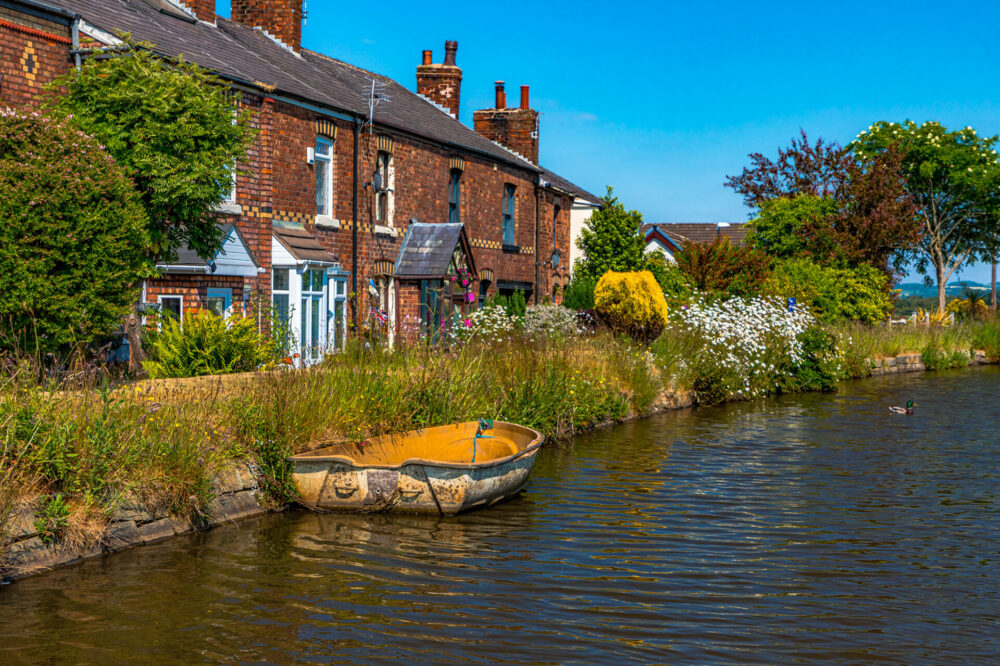Canals are not just serene stretches of water winding through the countryside—they’re also home to some of the most fascinating infrastructure in the UK. Among these, canal bridges stand out for their blend of history, engineering, and charm. Whether you’re a boater navigating under them, a walker crossing them, or a history lover admiring them, understanding canal bridges adds a whole new layer to your canal experience.
In this guide, we explore the different types of canal bridges, how they work, and what you should know when you encounter them.
1. Fixed Bridges: The Classics
🏰 Arch or Brick Bridges
These are the most common types of canal bridges, especially in rural areas. Built from stone or brick, they often feature:
- A curved arch for headroom
- Narrow towpaths on either side
- Numbers (like “Bridge 115”) to help with navigation
Tip for boaters: Always check your air draft (height clearance). Some older bridges are low, especially in high water conditions.
2. Lift Bridges: Up and Over
⬆️ Manually Operated
Some lift bridges need boaters or walkers to manually raise them using a windlass or key. These are often found on minor roads or footpaths.
⚙️ Electrically Operated
In busier areas or where roads cross canals, electrically operated lift bridges are more common. Boaters press a button or use a canal key to lift the bridge.
Tips:
- Always follow instructions on nearby signs.
- Close the bridge once you’ve passed—especially on rural routes!
- Be patient if traffic is waiting—safety first.
3. Swing Bridges: Rotating Passage
🔄 Swinging Bridges
These rotate horizontally to let boats through. Often found on canals in Yorkshire and Lancashire, they can be manual or powered.
Boater etiquette:
- Open the bridge fully before proceeding.
- Check for pedestrians, livestock, or vehicles before swinging it open.
- Return it to its original position and lock it.
4. Drawbridges and Bascule Bridges
⚖️ Counterweight Mechanics
Less common but impressive, bascule bridges use counterweights to pivot upwards like a seesaw. They’re typically powered and seen in more industrial or urban areas.
5. Modern and Unusual Bridges
🛤️ Road and Railway Overpasses
These newer bridges span canals without moving parts. They may have wider spans and higher clearances but still require caution when navigating below.
🌉 Iconic Structures
Some canal bridges are famous in their own right, like:
- The Pontcysyllte Aqueduct in Wales (a canal bridge!)
- The Barton Swing Aqueduct (a bridge for boats that swings over another waterway)
6. Safety and Navigation Tips for Canal Bridges
- Slow down when approaching: Especially if visibility is low or if it’s a tight turn.
- Mind the wind: Narrow bridges and windy conditions don’t mix well.
- Share the space: Many bridges are shared with roads, paths, or railways. Always give priority where needed and signal clearly if you’re operating a movable bridge.
Final Thoughts
Canal bridges are more than just a way across—they’re living pieces of canal history. From the elegant arches built during the Industrial Revolution to the practical swing bridges still in daily use, each tells a story about Britain’s waterways.
Whether you’re navigating by boat, strolling along a towpath, or simply admiring the view, canal bridges are a reminder of the ingenuity and heritage that make our canals so special.


